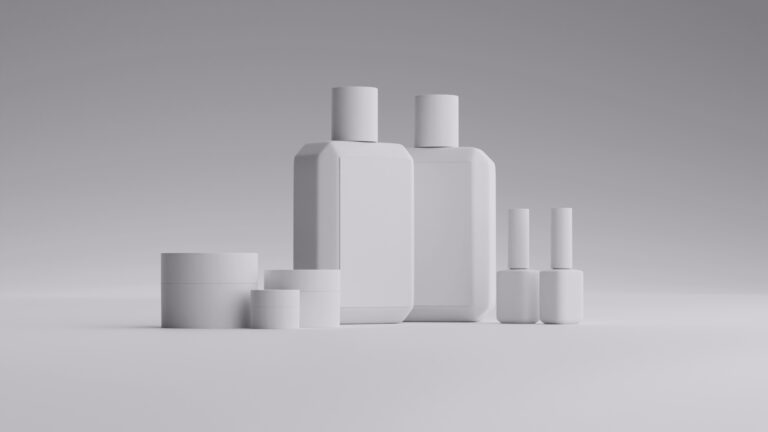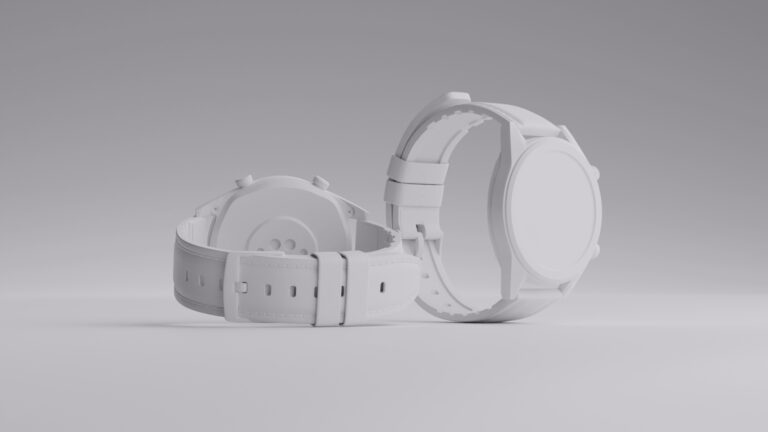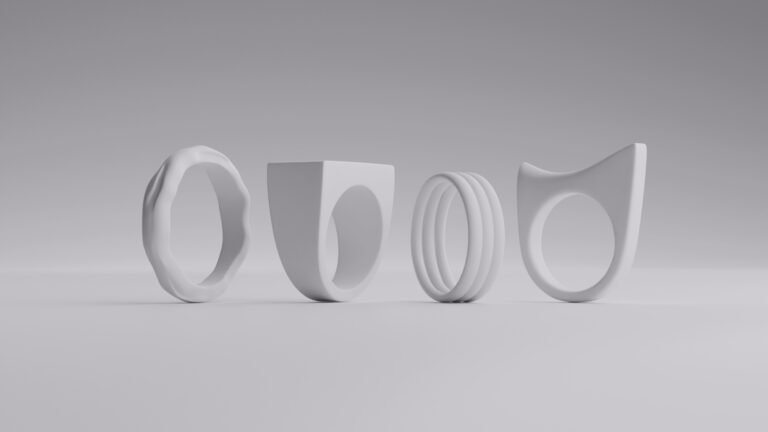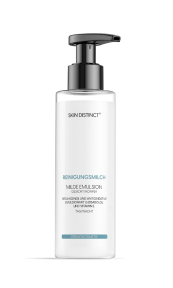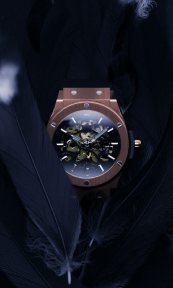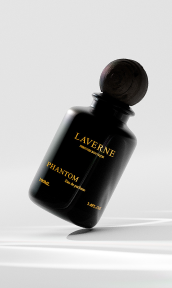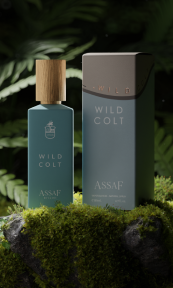In the fast-paced world of e-commerce, captivating product images play a pivotal role in driving sales and engagement. The rise of AI product photography is revolutionizing how businesses create and manage these visuals.
By streamlining image creation, reducing costs, and offering scalable, high-quality visuals, AI is poised to become the future of e-commerce imagery. Discover how it enhances online sales, its advantages over traditional methods, and its real-world applications in various industries.
What is AI Product Photography?

AI product photography refers to using artificial intelligence and machine learning technologies to create, edit, and enhance product images for online platforms, eliminating the need for traditional photography setups. This innovative approach uses algorithms to simulate high-quality visual outputs based on various inputs, such as 3D models, existing photos, or textual descriptions of products.
The images generated by AI are designed to meet the same high standards as professional photographs, offering businesses a more efficient way to produce compelling visuals.
Key Components of AI Product Photography
- Image Generation from Scratch – AI tools can create photorealistic images without requiring a physical product or camera. By inputting a detailed description or using 3D models, they generate images that mimic the look, texture, and lighting of traditional photography. For example, AI can produce a high-resolution image of a product even before it’s manufactured, giving businesses the flexibility to market products ahead of time.
- Background Removal and Replacement – One of the most common uses of artificial intelligence in photography is automatic background removal. Traditional photography often requires manual editing to isolate a product from its background, but AI tools can automatically remove backgrounds and replace them with more suitable or customized environments. This is particularly useful for businesses that need consistent white backgrounds for product catalogs or want to showcase their products in diverse settings without the need for reshoots.
- Automated Image Retouching and Enhancement – AI can automatically enhance images by adjusting colors, contrast, and lighting to create more appealing visuals. It can also apply retouching techniques such as sharpening edges, reducing noise, or correcting imperfections. This is especially valuable for industries like fashion or cosmetics, where detailed visual accuracy and appeal are essential. These intelligent systems can perform these enhancements in a fraction of the time it takes for human editors, making it easier to produce polished images at scale.
- 3D Rendering and Simulation – This type of product photography goes beyond simple 2D images by incorporating 3D rendering capabilities. AI can generate lifelike 3D models of products, allowing customers to view them from multiple angles, zoom in on details, or even see the product in motion. This dynamic approach is particularly beneficial for industries like furniture, automotive, or electronics, where customers want to explore the product’s features and design before making a purchase.
- Virtual Photography and Styling – Virtual photography powered by AI enables businesses to place their products in various settings or styles without the need for physical props or locations. It can simulate different lighting conditions, seasonal themes, or backgrounds, creating a diverse range of images from just one product model. For instance, a fashion brand can display the same dress in multiple settings, from a beach backdrop for summer collections to an urban street style for a fall campaign, all without scheduling additional photoshoots.
How AI Learns to Create Images
AI product photography is powered by advanced algorithms, often utilizing machine learning (ML) models and neural networks. These models are trained on vast datasets of images, learning to recognize patterns, textures, and structures that allow them to generate or enhance visuals with high accuracy.
- Generative Adversarial Networks (GANs): One of the most popular AI methods used in product photography is GANs, where two neural networks—the generator and the discriminator—work together to create realistic images. The generator creates images based on input data, while the discriminator evaluates the images and provides feedback, prompting the generator to improve until the output is indistinguishable from real photos.
- Computer Vision Algorithms: These algorithms allow AI to “see” and analyze product images, enabling features like automatic cropping, object detection, and lighting correction. By recognizing objects and understanding spatial relationships, AI can isolate products and optimize them for e-commerce platforms, ensuring that the images meet specific requirements (e.g., size, resolution, or format).
How AI Product Photography Enhances Online Sales

This type of intelligent product photography is transforming the way businesses present products online, significantly boosting e-commerce sales by offering scalable, high-quality images that engage consumers.
By streamlining the process of image creation, reducing costs, and improving the customization of visuals, AI enables businesses to create product imagery that not only captures attention but also builds trust and drives conversions. Here’s how AI product photography directly enhances online sales:
Accelerating Product Listings and Time-to-Market
Speed is critical in the fast-paced e-commerce world, where trends evolve rapidly and competition is fierce. Traditional product photography involves lengthy processes—organizing photoshoots, editing images, and optimizing them for various platforms, all of which can delay a product’s availability online. AI product photography automates many of these steps, allowing businesses to produce images almost instantaneously.
For instance, it can generate product images from 3D models or sketches, enabling businesses to start promoting and selling products even before they’re manufactured. This is particularly valuable in industries with seasonal launches or limited-time promotions, allowing companies to bring products to market faster and take advantage of short sales windows.
Enhancing Customer Experience Through Visual Consistency
Visual consistency across a product catalog builds trust and provides a cohesive brand experience. In traditional photography, achieving consistency—whether in lighting, angles, or image quality—can be difficult, especially when dealing with large inventories or multiple product lines. AI product photography addresses this by ensuring uniformity in the visuals, offering perfectly aligned images with consistent backgrounds, lighting, and angles.
This consistency creates a seamless shopping experience, reducing confusion for customers who expect standardized images that make it easy to compare products. Better visuals lead to greater confidence in the purchase decision, ultimately reducing cart abandonment and increasing conversion rates.
Customizing Images for Target Audiences
One of the most powerful features of AI product photography is its ability to generate multiple versions of the same product image tailored to different demographics, markets, or seasons. By leveraging AI, businesses can easily customize product images to reflect specific audience preferences without the need for reshooting or manual editing.
For example, it can generate images of a product in various lifestyle settings—urban environments for a younger audience or minimalist backdrops for a premium brand image. By adapting images to specific customer segments, businesses can enhance engagement and create a more personalized shopping experience, which has been proven to increase conversion rates.
Boosting Visual Quality and Product Detail
High-quality images are crucial for online shoppers, as they rely heavily on visual information to evaluate a product’s quality, features, and suitability for their needs. AI product photography excels at creating images with sharp details, vivid colors, and accurate lighting, ensuring that every aspect of the product is represented clearly.
In some cases, AI-generated images can provide more detailed and diverse perspectives than traditional photography. For example, it can automatically produce close-up shots, 360-degree views, or even product animations that show functionality or scale. Offering this level of detail improves customer satisfaction by giving them a more comprehensive understanding of the product, which can reduce return rates and increase positive reviews.
Enabling A/B Testing for Optimized Sales
Product photography created by artificial intelligence allows businesses to quickly and easily create variations of the same product image. Thus, it enables rapid A/B testing to determine which visuals resonate best with different audiences. For example, e-commerce platforms can test different backgrounds, color schemes, or angles to see which images result in higher engagement and conversions.
Traditional product photography requires additional time and resources to create these variations, but with AI, businesses can generate multiple versions of images almost instantly. A/B testing is particularly useful in optimizing product pages and advertising campaigns, helping businesses make data-driven decisions that directly lead to increased sales.
Reducing Returns with Accurate, Realistic Images
One of the main reasons for product returns in e-commerce is that the item received does not match the customer’s expectations based on the online images. AI product photography can help minimize this issue by creating accurate, highly realistic images that reflect the product’s true color, texture, size, and dimensions.
AI tools are capable of rendering detailed representations of products in different lighting conditions or environments, offering customers a more complete understanding of what they are purchasing. By providing clearer and more truthful visuals, businesses can significantly reduce return rates and the associated costs of processing returns, restocking, and losing potential future sales from dissatisfied customers.
Scaling Image Production for Large Product Catalogs
For businesses with extensive product inventories, such as large retailers or online marketplaces, creating images for each product manually can be prohibitively time-consuming and expensive. AI product photography offers a scalable solution, allowing businesses to generate thousands of high-quality images in a fraction of the time it would take to produce them using traditional methods.
This scalability is particularly beneficial for industries that frequently release new product lines or seasonal collections, such as fashion, electronics, or home goods. By automating image creation, AI enables businesses to keep their catalogs updated with fresh, high-quality visuals without the need for constant photoshoots, allowing them to focus resources on other areas of the business.
Driving Social Media Engagement with Creative Visuals
AI can easily generate visually captivating and creative product images tailored specifically for social media platforms, where engagement and aesthetics play a crucial role in attracting consumers. Whether it’s generating unique backgrounds, incorporating seasonal themes, or adding branded elements to the visuals, AI helps businesses create content that stands out in the crowded digital marketplace.
Social media is one of the primary drivers of e-commerce sales, and businesses that leverage AI-generated visuals to create eye-catching content can increase their organic reach, attract more followers, and drive more traffic to their online stores. Producing fresh and creative visuals on demand, helps brands stay relevant in the fast-paced world of social media marketing.
Facilitating Localization for Global Markets
For businesses operating in multiple regions or targeting global markets, localization is essential for driving sales. AI product photography simplifies the localization process by allowing businesses to quickly adapt product images to suit different cultural contexts, language preferences, and market trends.
For example, it can adjust background settings, and color schemes, or even incorporate region-specific elements into the product imagery to better resonate with local audiences. By offering localized versions of product images, businesses can improve their connection with international consumers and enhance their chances of making sales in diverse markets.
Cost Efficiency and Resource Allocation
Finally, AI product photography offers significant cost savings for businesses by eliminating many of the expenses associated with traditional photography. There is no need to hire photographers, rent studios, or invest in costly equipment and post-production editing.
AI tools can produce high-quality images at a fraction of the cost, enabling businesses—especially small to medium-sized enterprises—to allocate their resources more efficiently.
With lower overhead costs, businesses can reinvest their savings into other key areas, such as marketing, inventory management, or product development. The cost efficiency ensures that even smaller businesses can compete with larger companies by maintaining a high standard of visual presentation.
AI product photography is a game-changer for online businesses, offering a faster, more cost-effective, and scalable solution to create high-quality product images. By improving the speed of image creation, enhancing customization, and enabling better customer experiences, AI directly impacts engagement, conversion rates, and ultimately sales.
As e-commerce continues to grow, this type of product photography will become an indispensable tool for businesses seeking to stand out in a competitive marketplace while driving better results.
Real-World Applications

AI product photography is making waves across a wide range of industries, transforming how businesses showcase their products and engage with customers. By streamlining image creation and delivering high-quality, customizable visuals at scale, this type of photography is being adopted by various sectors to enhance their marketing efforts, boost conversions, and reduce operational costs. Here’s an in-depth look at how AI product photography is applied in different industries:
E-Commerce: Enhancing Product Listings and Conversions
In e-commerce, product images are a critical factor in driving sales. Since customers can’t physically interact with items online, they rely heavily on visual representation to understand product details, quality, and value.
AI-generated photography helps e-commerce businesses create consistent, high-resolution images that meet consumer expectations and platform requirements.
- Product Variations: AI allows businesses to create multiple variations of product images, such as different colors, sizes, or angles, without needing to photograph every version. This flexibility is particularly useful for businesses with large inventories that need to quickly update listings with new options.
- Quick Time-to-Market: AI-generated images enable faster product launches. For example, businesses can create lifelike images of upcoming products before they are even manufactured, allowing pre-orders and promotional campaigns to begin early.
- Consistency Across Catalogs: For e-commerce giants like Amazon or Shopify sellers, maintaining a consistent look across product images is crucial for brand identity and customer trust. AI ensures that all product images align with brand guidelines in terms of lighting, angles, and resolution, making online catalogs visually cohesive.
Fashion Industry: Scaling Product Imagery and Personalization
The fashion industry is one of the biggest beneficiaries of AI product photography, as it allows brands to scale imagery for ever-changing collections, seasons, and trends.
- Model and Environment Flexibility: It enables the generation of images featuring clothing on virtual models, eliminating the need for multiple photoshoots with different models, poses, or settings. Brands can quickly swap out models, environments, or backgrounds to target different audiences or seasons without the need for physical reshoots.
- Creative Customization: Fashion brands often need visuals for different contexts—such as lifestyle images for Instagram, studio shots for websites, and editorial content for campaigns. It can generate all of these variants from the same product images, allowing brands to create a diverse range of visuals for marketing across channels.
- Virtual Try-Ons: Artificial intelligence can also power virtual try-on technology, enabling customers to see how garments would look on them without physically trying them on. This helps enhance customer engagement and reduce returns, as customers are more informed about fit and style before making a purchase.
Electronics and Technology: Detailed, High-Resolution Product Images
In the electronics industry, where customers often make decisions based on intricate product details, such as design, functionality, and components, intelligent product photography provides a powerful solution for creating detailed, high-quality images.
- Close-Up Shots and 360-Degree Views: AI can generate ultra-high-definition close-ups and 360-degree views of electronic products, showcasing intricate details such as ports, buttons, textures, and finishes. These images provide customers with a more comprehensive understanding of the product, enhancing their confidence in purchasing higher-priced items.
- Multiple Configurations: For technology companies selling products with customizable features—such as laptops, smartphones, or gaming consoles—AI photography allows for quick generation of images that reflect different configurations (e.g., color, memory capacity, or optional add-ons) without requiring separate photoshoots for each variant.
- Minimal Background Imagery: Many tech companies prefer clean, minimal backgrounds for product images to highlight the sleek design of their products. AI can efficiently create these images while ensuring uniformity and attention to detail, even across large product catalogs.
Furniture and Home Goods: Virtual Staging and Room Customization

In the furniture and home goods industries, customers need to visualize how products will look and fit into their homes. AI product photography helps solve this challenge by generating images that simulate real-world environments.
- Virtual Staging: AI allows for the virtual staging of furniture in various room settings, enabling businesses to showcase products in different living room designs, lighting conditions, and decor styles. Customers can visualize how a sofa, dining set, or decor item will look in a range of environments, improving their confidence in making large purchases online.
- Customizable Room Layouts: It can produce images of furniture products from different angles and in different room configurations. This flexibility helps customers see how a product fits spatially, providing a better sense of scale and proportion, which can reduce the likelihood of returns due to sizing issues.
- Personalized Shopping Experience: For home goods retailers, AI can personalize the shopping experience by tailoring product images to specific customer preferences. For instance, an AI tool might present the same product in a minimalist Scandinavian design for one customer and a more ornate, traditional room setting for another, based on past browsing behavior.
Cosmetics and Beauty: Hyper-Realistic Product Images and Tutorials
The beauty and cosmetics industry heavily relies on imagery to showcase product details such as color, texture, and finish. AI product photography enhances this by delivering hyper-realistic images and enabling new ways to interact with products digitally.
- Detailed Product Textures: Artificial intelligence can create close-up, highly detailed images that showcase the texture of beauty products—whether it’s a glossy lipstick, shimmering eyeshadow, or matte foundation. This allows customers to see exactly how the product will appear when applied, enhancing transparency and reducing disappointment.
- Virtual Makeup Applications: AI-powered virtual try-ons allow users to see how beauty products (e.g., lipsticks, eyeshadows, or blushes) will look on their skin tone, enabling more personalized and interactive shopping experiences. It can also generate “before and after” images to demonstrate the effectiveness of skincare products.
- Seasonal and Trend-Based Customization: Like fashion, the beauty industry changes with trends and seasons. AI allows businesses to rapidly generate new images that reflect current color palettes or seasonal themes, ensuring their marketing remains timely and relevant.
Food and Beverage: Enhancing Presentation and Storytelling
For food and beverage businesses, visual presentation is key to enticing customers. AI product photography offers the tools to create mouth-watering images that drive sales and engagement.
- Optimized Food Presentation: AI can enhance the appearance of food products by adjusting lighting, color balance, and even food textures to make dishes look more appetizing. It can also generate multiple variants of the same dish in different settings—whether it’s a rustic kitchen for a home-cooked vibe or a sleek, modern environment for a gourmet feel.
- Recipe and Packaging Visualization: For packaged food companies, artificial intelligence can create imagery of their products in various contexts—whether on store shelves, in-home pantries, or alongside complementary products. This versatility is particularly helpful for advertising and packaging design, where brands need to show their products in use.
- Ingredient Close-Ups and Details: AI can also generate close-ups of ingredients or textures, which can help brands emphasize the quality or origin of their ingredients. Detailed images of fresh produce, spices, or textures like creamy sauces can enhance a brand’s storytelling and appeal to health-conscious or gourmet customers.
Automotive Industry: Showcasing Features and Customization
The automotive industry benefits from this type of product photography by creating detailed, dynamic visuals of vehicles and their features. Given the large size and complexity of cars, traditional photography can be logistically challenging, but AI makes it more accessible.
- Virtual Walkarounds and Interior Views: AI can generate full 360-degree exterior views of vehicles, as well as detailed interior shots. This allows customers to explore a car’s design and features as if they were physically inspecting it, improving the online car-buying experience.
- Customization Options: Many car manufacturers offer a wide range of customization options, from color to interior materials to wheel designs. AI product photography can quickly generate images of all these variations, giving customers a real-time visual of their preferred configurations without the need for costly in-person photoshoots for each custom build.
AI product photography is revolutionizing how businesses across various industries present their products online. From enhancing product listings in e-commerce to providing virtual try-ons in fashion and beauty, it is transforming the visual representation of products to better engage customers and drive sales. By leveraging AI’s ability to create scalable, high-quality, and customizable images, businesses can improve their marketing strategies, reduce costs, and stay competitive in an increasingly digital marketplace.
Challenges and Considerations

While AI product photography offers significant advantages, it also presents some challenges and considerations that businesses need to keep in mind before fully integrating it into their workflows. From potential limitations in image authenticity to the technical complexity of implementation, these factors play an important role in determining how and when AI-generated imagery should be used. Here’s a breakdown of the main challenges:
Image Authenticity and Consumer Trust
One of the key concerns with AI product photography is the potential for images to appear overly artificial or not accurately represent the actual product. AI-generated images may sometimes create a disconnect between what customers see online and what they receive, which can lead to dissatisfaction and increased return rates.
- Potential for Misrepresentation: While AI can produce highly realistic visuals, there is a risk of creating images that do not accurately capture the product’s texture, color, or scale. For example, artificial intelligence might make a product look more vibrant or polished than it is, leading to mismatched expectations.
- Building Consumer Confidence: Trust is critical in e-commerce, and businesses must ensure that AI-generated images provide a faithful representation of their products. Overly edited or fabricated images can erode consumer trust if they do not reflect the real-world product experience.
Technical Expertise and Implementation
While AI product photography offers automation and scalability, it also requires technical expertise to implement effectively. Businesses that are unfamiliar with such tools may face challenges in setting up and managing these technologies.
- Complex Software Solutions: AI-powered tools for image generation and editing may require knowledge of machine learning models, neural networks, or computer vision algorithms. Companies may need to invest in training or hiring specialists to oversee its integration.
- Learning Curve for New Tools: For businesses accustomed to traditional photography methods, transitioning to AI-based workflows can involve a steep learning curve. Teams will need to familiarize themselves with new software, workflows, and best practices to ensure optimal results.
Cost of Initial Setup
While AI product photography can be cost-effective in the long run, the initial investment in such tools, software, and skilled personnel can be substantial, especially for small businesses.
- Investment in Technology: Many AI-powered tools require a significant upfront investment. High-end platforms that offer image generation, 3D modeling, and customization capabilities may come with steep subscription fees or licensing costs. Businesses need to carefully weigh the long-term benefits of AI against the initial setup expenses.
- Hardware Requirements: Some AI-based tools are resource-intensive and require advanced computing power for tasks like rendering high-resolution images or processing complex 3D models. Businesses may need to upgrade their hardware infrastructure to support these tools effectively.
Legal and Ethical Considerations
As product photography created with artificial intelligence becomes more widespread, it raises important legal and ethical questions about ownership, authenticity, and transparency in marketing.
- Intellectual Property and Copyright Issues: When it generates product images, questions arise regarding the ownership of those visuals. Who owns the copyright—the business using the AI tool, or the company providing the software? This area of law is still evolving, and businesses must be cautious when it comes to using AI-generated content in their marketing.
- Ethical Concerns Over Manipulation: AI has the potential to over-manipulate images, creating visuals that are far from the actual product’s appearance. This raises ethical concerns about misleading consumers. Businesses need to strike a balance between enhancing product visuals and ensuring that the images remain truthful representations of the product.
Limitations in Creativity and Customization
While this type of product photography excels at generating high-quality, standardized images at scale, it may fall short when it comes to complex creative projects that require human intuition and artistry.
- Limited Artistic Flexibility: AI tools are often designed to create images based on predefined parameters or patterns. For brands that rely on unique, highly creative, or emotionally driven visual storytelling, artificial intelligence may lack the artistic flexibility to convey the desired brand image or narrative.
- Customization Boundaries: Although it can generate multiple variations of images, its customization options may still be limited compared to the creative possibilities of traditional photography. For instance, creating intricate, personalized photoshoots with specific props, models, or concepts may not be easily replicable with AI-generated visuals.
Dependence on Data Quality
The performance of AI product photography tools depends largely on the quality of the data they are trained on. If the systems are trained on low-quality images or limited datasets, the resulting product images may be less effective.
- Data Bias and Inaccuracy: AI relies on existing data to generate images. If the training data is biased or incomplete, the algorithm may not accurately represent diverse product types or styles. For example, a model trained on predominantly white or neutral-colored items might struggle to accurately capture vibrantly colored or textured products.
- Constant Updates and Optimization: To keep up with evolving trends and product designs, these types of models need to be continuously updated and retrained. Businesses need to ensure that their AI tools are regularly optimized to produce high-quality, current visuals that reflect changing market conditions.
Limitations in Capturing Unique Product Features
Certain products have unique features or characteristics that can be difficult for AI to capture accurately. This is particularly true for items with complex textures, intricate designs, or products that change over time (e.g., foods, plants, or handmade goods).
- Difficulty in Capturing Texture or Detail: While AI is excellent at creating clean, polished images, it may struggle to accurately depict intricate textures or details. Products like fabrics, gourmet foods, or handmade crafts may lose some of their unique qualities when rendered, which can be problematic for businesses that rely on these aspects to differentiate their offerings.
- Challenges with Dynamic Products: For products that change appearance depending on the environment or how they’re used (e.g., a product that shifts colors in different lighting), AI might not accurately reflect those dynamic attributes. In these cases, traditional photography may be better suited to showcasing the product’s unique qualities.
AI product photography offers numerous benefits, from speeding up image creation and reducing costs to improving scalability. However, businesses must also navigate challenges such as image authenticity, technical complexity, legal considerations, and limitations in creative flexibility. Understanding these challenges and carefully planning for their impact can help businesses maximize the advantages of AI product photography while mitigating potential drawbacks. By considering both the opportunities and the risks, companies can make informed decisions about how best to integrate AI-powered tools into their visual marketing strategies.
Why Choose Professional AI Product Photography Services

As AI product photography continues to revolutionize the way businesses create and present their product visuals, many companies are turning to professional artificial intelligence-powered services to ensure they reap the maximum benefits. While these tools are becoming more accessible, there are several reasons why working with specialized product photography services can elevate your brand’s online presence, improve visual consistency, and drive sales growth. Here’s why businesses should consider opting for professional AI product photography services:
Access to Cutting-Edge Technology and Expertise
Professional AI product photography services use state-of-the-art technology and have teams of experts who specialize in creating high-quality product images using artificial intelligence. These providers have in-depth knowledge of the latest algorithm-driven tools, ensuring that the images they produce are not only visually appealing but also optimized for various e-commerce platforms and marketing channels.
- Advanced AI Algorithms: Professional services often have access to proprietary or highly advanced AI algorithms that go beyond basic image generation. These tools can handle complex image manipulation, 3D modeling, and hyper-realistic rendering that may be difficult to achieve with off-the-shelf software.
- Expert Technical Support: Trained professionals can troubleshoot and customize such tools to suit the specific needs of your brand. This expertise ensures that your images meet the highest standards, both technically and creatively, without you needing to invest in the learning curve or technical infrastructure.
Consistency Across Visuals and Branding
One of the key advantages of this type of product photography is its ability to create consistent visuals at scale, but achieving this requires careful control and oversight. Professional AI product photography services ensure that all your product images align with your brand’s visual identity and maintain a cohesive look across platforms.
- Brand Consistency: Professional services guarantee that all product images, whether for your website, social media, or advertising campaigns, maintain a unified visual style in terms of lighting, angles, and color schemes. This consistency is crucial for building a recognizable and trustworthy brand.
- Image Quality Control: Maintaining a uniform level of image quality can be challenging, especially for businesses with large inventories. Professional AI services ensure that each image, regardless of the product category or number of SKUs, meets high-quality standards. They also monitor and fine-tune outputs to avoid inconsistencies or image flaws that could impact brand perception.
Time and Cost Efficiency
Outsourcing this type of product photography to professionals can save significant time and resources, especially for businesses that don’t have the internal capacity to manage AI technology or traditional photography workflows.
- Quick Turnaround Times: AI services can dramatically reduce the time it takes to produce high-quality product images. Professional services streamline the entire process from initial consultation to final delivery, enabling businesses to get their products to market faster.
- Cost-Effective for Large Catalogs: For businesses with extensive product ranges, traditional photography can be time-consuming and expensive. Professional AI services can generate hundreds or thousands of images at a fraction of the cost of organizing physical photoshoots, especially when dealing with product variations or multiple angles.
Customization and Scalability
Professional AI photography services offer a high degree of customization to meet the unique needs of businesses across different industries. Whether it’s adapting images for various markets or creating specific product views, these services can tailor their outputs to your exact specifications.
- Tailored Visuals: Professional AI providers can create images that reflect your brand’s unique selling points, whether it’s through custom backgrounds, specific lighting conditions, or adding personalized elements that resonate with your target audience. They can also generate images that align with different cultural or market preferences if you operate internationally.
- Effortless Scalability: As your product catalog grows, professional services make it easy to scale image production without compromising quality. They can automate the process for large volumes of products, ensuring that every new product gets the same level of attention and consistency.
Optimized for Multiple Platforms
Each e-commerce platform or marketing channel may have specific image requirements, from resolution and aspect ratio to lighting and background preferences. Professional AI product photography services understand these requirements and can optimize your images accordingly.
- Platform-Specific Optimization: Whether your business is selling on Amazon, Shopify, Instagram, or through a standalone website, professional services can create images that adhere to each platform’s technical specifications. This ensures that your products always look their best and that images are never rejected due to size or format issues.
- Multichannel Compatibility: AI product photography services can generate a wide variety of image formats—studio shots for product pages, lifestyle imagery for social media, and close-up shots for advertising—all optimized for different platforms. This multichannel approach saves time and ensures a seamless experience across customer touchpoints.
Innovative Image Solutions for Competitive Differentiation
In highly competitive markets, standing out visually can make a significant difference in driving conversions. Professional artificial intelligence product photography services offer innovative image solutions that can give your business an edge over competitors.
- Interactive Features: Some advanced services offer interactive product images, such as 360-degree views, zoomable details, or even augmented reality (AR) experiences, which allow customers to visualize products in their own space. These features can help increase customer engagement and improve conversion rates, as customers feel more connected to the products they are considering.
- Creative Visual Storytelling: Professional services can also integrate AI with creative storytelling. For instance, they can generate images of products in various real-world scenarios or tailored to seasonal trends, adding emotional appeal to your visuals that can resonate with your audience.
Data-Driven Insights and Optimization
Working with a professional AI product photography service often comes with the added benefit of data-driven insights. These services can provide valuable analytics to help optimize your visual strategy.
- Performance Tracking: Professional providers can track how different images perform across platforms and offer insights into what kinds of visuals drive the most engagement or conversions. They can then adjust image creation strategies based on this data to continuously improve results.
- A/B Testing and Iteration: By leveraging artificial intelligence, professional services can rapidly generate multiple image variants for A/B testing. This allows businesses to experiment with different visual styles, layouts, or angles and identify which approach resonates most with their audience, leading to more informed visual marketing decisions.
Choosing professional AI product photography services offers businesses access to cutting-edge technology, ensures visual consistency, saves time and costs, and provides tailored scalable solutions. These services not only enhance the quality and efficiency of product image creation but also help businesses remain competitive by offering innovative features and data-driven optimization. For companies seeking to elevate their visual content and drive online sales, investing in professional AI product photography is a forward-thinking strategy that can yield long-term benefits.
Wrapping up
AI product photography is transforming the way businesses present their products online, offering a streamlined, cost-effective, and scalable alternative to traditional photography. From fashion and electronics to e-commerce and home goods, industries are leveraging AI-generated visuals to drive engagement and increase conversions.
While there are challenges to consider, the benefits far outweigh the drawbacks, making AI product photography an essential tool for modern businesses. As this technology continues to evolve, its role in e-commerce imagery will only expand, further boosting sales and growth potential for online retailers worldwide.
FAQ
What is AI product photography?
AI product photography uses artificial intelligence to create, enhance, and optimize product images. This technology can generate high-quality visuals, customize images, and streamline the image creation process, reducing the need for traditional photography.
How does AI product photography enhance e-commerce sales?
AI product photography enhances e-commerce sales by providing high-quality, consistent, and scalable images that better showcase products. This leads to improved customer engagement, higher conversion rates, and faster time-to-market for new products.
What are the key benefits of using AI over traditional photography methods?
Key benefits include cost reduction, faster image production, scalability, and the ability to easily create multiple variations of product images. AI also helps maintain visual consistency across large product catalogs and can generate hyper-realistic visuals.
What are some popular AI tools for product photography?
Popular AI tools for product photography include Adobe Photoshop’s AI features, Runway ML, Canvas AI tools, and specialized platforms like Depth Camera or AI-based rendering software. These tools offer various capabilities, from image enhancement to 3D modeling.
How can AI-generated images drive customer engagement and conversions?
AI-generated images can drive engagement by providing interactive features such as 360-degree views or virtual try-ons. High-quality, customized visuals improve product appeal and help customers make more informed purchasing decisions, which can increase conversion rates.
What are some challenges associated with AI product photography?
Challenges include potential issues with image authenticity, the need for technical expertise, high initial setup costs, and ethical considerations regarding image manipulation. AI may also struggle with capturing intricate details or unique product features.
Why should businesses consider professional AI product photography services?
Professional AI product photography services offer access to advanced technology, ensure consistent visual branding, save time and costs, and provide tailored solutions for scaling image production. These services also offer data-driven insights and innovative features that can enhance marketing strategies and boost sales.





